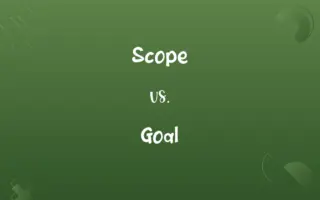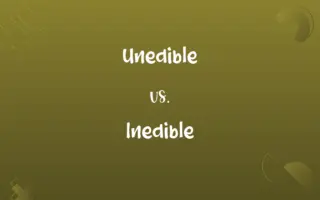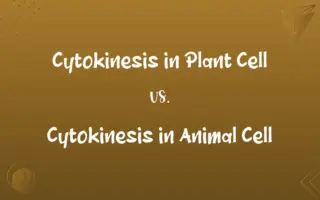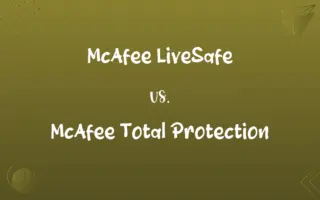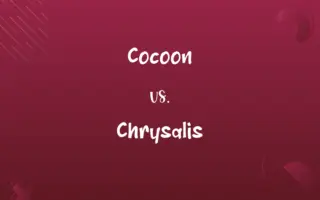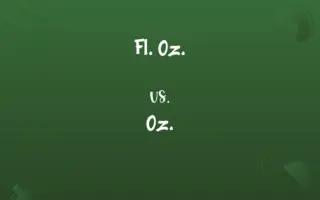Doe vs. Fawn: Know the Difference

By Dua Fatima & Hifza Nasir || Updated on March 7, 2024
A doe is a mature female deer, while a fawn is a young deer of either sex. Does are caregivers, fawns are cared for.
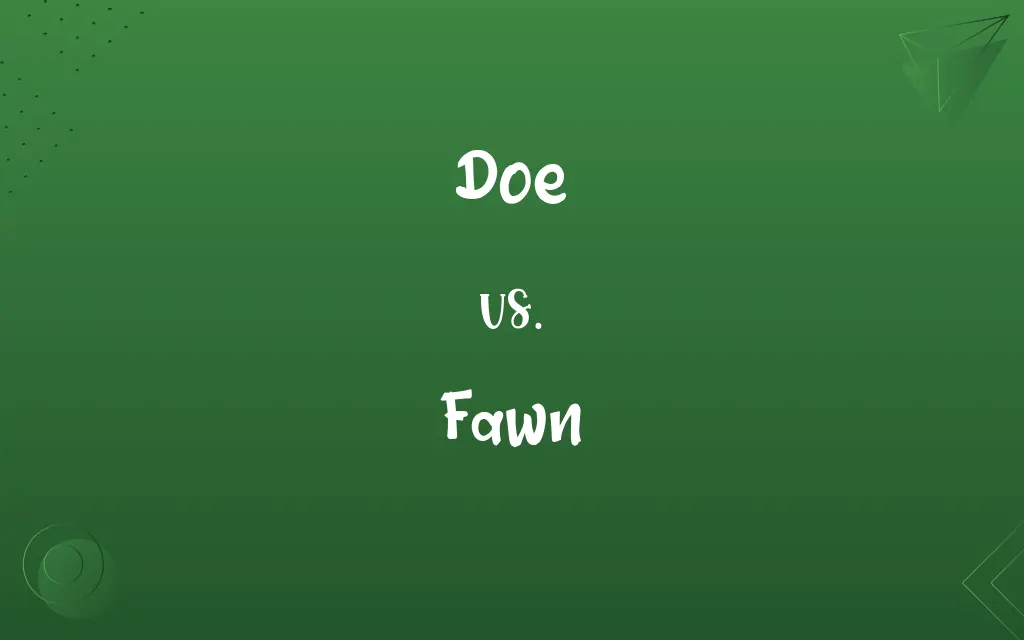
Key Differences
A doe refers specifically to an adult female deer, known for its role in reproduction and care of its offspring. Whereas a fawn is the term used to describe young deer, usually less than a year old, of either sex, not yet independent and still reliant on the doe for protection and guidance.
Hifza Nasir
Mar 07, 2024
Doe's physical characteristics include a larger size, more developed body, and, in some species, the absence of antlers, which highlights their role in nurturing rather than territorial defense or fighting. On the other hand, fawns are distinguishable by their smaller size, less developed bodies, and the presence of white spots on their coat, which serve as camouflage, a critical survival feature until they mature.
Dua Fatima
Mar 07, 2024
Behaviorally, does are responsible for finding food, teaching survival skills, and protecting their fawns from predators. Fawns, in contrast, spend their initial months of life learning to walk, forage, and hide from predators, heavily depending on the doe's guidance and protection.
Dua Fatima
Mar 07, 2024
In social structure, does often form groups or herds with other females and their young to increase the chances of detecting predators and finding food. Fawns, while part of these groups, are mostly seen with their mothers until they are old enough to survive independently.
Dua Fatima
Mar 07, 2024
The lifespan of a doe, being an adult, is directly influenced by its ability to avoid predators and find sufficient food, typically ranging from 6 to 14 years in the wild. A fawn's survival and lifespan, conversely, heavily depend on the care it receives from the doe and its ability to quickly learn survival skills.
Dua Fatima
Mar 07, 2024
ADVERTISEMENT
Comparison Chart
Physical Features
Larger size, no spots, may lack antlers
Smaller size, white spots for camouflage, no antlers
Dua Fatima
Mar 07, 2024
Behavior
Finds food, protects, teaches
Learns to walk, forage, relies on doe
Shumaila Saeed
Mar 07, 2024
Social Structure
Forms groups with other does and offspring
Stays close to doe, within the group
Dua Fatima
Mar 07, 2024
ADVERTISEMENT
Doe and Fawn Definitions
Doe
An adult female deer responsible for birthing and nurturing fawns.
The doe led her fawn through the forest to find food.
Dua Fatima
Mar 07, 2024
Fawn
Vulnerable to predators without the doe's protection.
The fawn froze, relying on its camouflage to hide from the nearby predator.
Hifza Nasir
Mar 07, 2024
Doe
Can live up to 14 years in the wild, depending on predation and food availability.
The old doe had successfully raised many fawns throughout her life.
Hifza Nasir
Mar 07, 2024
Fawn
A young deer of either sex, characterized by white spots for camouflage.
The fawn stayed hidden in the brush, spots blending perfectly with the dappled sunlight.
Dua Fatima
Mar 07, 2024
Doe
Recognizable by their larger size and lack of antlers in many species.
The doe grazed quietly in the meadow, alert to any signs of predators.
Dua Fatima
Mar 07, 2024
ADVERTISEMENT
Fawn
Part of a doe’s offspring, usually staying with her for up to a year.
The doe and her fawn crossed the stream, carefully avoiding deeper waters.
Shumaila Saeed
Mar 07, 2024
Doe
Plays a crucial role in the social structure of deer herds.
The doe kept her fawn close, teaching it how to forage.
Dua Fatima
Mar 07, 2024
Fawn
Learns essential survival skills under the doe's guidance.
The fawn practiced sprinting short distances, a skill that could one day save its life.
Dua Fatima
Mar 07, 2024
Doe
Acts as the primary caregiver to fawns.
The doe gently nudged her fawn towards a safe path away from the hunters.
Dua Fatima
Mar 07, 2024
Fawn
To exhibit affection or attempt to please, as a dog does by wagging its tail, whining, or cringing.
Dua Fatima
Oct 19, 2023
Doe
The female of various other mammals, such as antelopes, kangaroos, mice, or rabbits.
Dua Fatima
Oct 19, 2023
Doe
A female deer; also used of similar animals such as antelope, (less commonly goat as nanny is also used).
Dua Fatima
Oct 19, 2023
Doe
A female deer or antelope; specifically, the female of the fallow deer, of which the male is called a buck. Also applied to the female of other animals, as the rabbit. See the Note under Buck.
Dua Fatima
Oct 19, 2023
Doe
The federal department responsible for maintaining a national energy policy of the United States; created in 1977
Dua Fatima
Oct 19, 2023
Fawn
(intransitive) To seek favour by flattery and obsequious behaviour (with on or upon).
Dua Fatima
Oct 19, 2023
Fawn
To show devotion or submissiveness by wagging its tail, nuzzling, licking, etc.
Dua Fatima
Oct 19, 2023
Fawn
The young of an animal; a whelp.
[The tigress] . . . followeth . . . after her fawns.
Dua Fatima
Oct 19, 2023
Fawn
To court favor by low cringing, frisking, etc., as a dog; to flatter meanly; - often followed by on or upon.
You showed your teeth like apes, and fawned like hounds.
Thou with trembling fear,Or like a fawning parasite, obeyest.
Courtiers who fawn on a master while they betray him.
Dua Fatima
Oct 19, 2023
Fawn
Try to gain favor by cringing or flattering;
He is always kowtowing to his boss
Dua Fatima
Oct 19, 2023
Fawn
Dependent on the doe for food, protection, and learning.
The fawn followed closely behind the doe, learning the safe paths through the forest.
Shumaila Saeed
Mar 07, 2024
Repeatedly Asked Queries
What is a doe?
A doe is an adult female deer, responsible for reproduction and nurturing of young.
Hifza Nasir
Mar 07, 2024
Do does take care of fawns that are not their own?
Yes, in some deer species, does will care for or protect other does' fawns, especially within a herd.
Shumaila Saeed
Mar 07, 2024
How can you tell a doe from a fawn?
Does are larger, lack the white spots fawns have, and, in many species, do not have antlers. Fawns are smaller and have white spots for camouflage.
Dua Fatima
Mar 07, 2024
At what age does a fawn stop being called a fawn?
A fawn is typically referred to as such until it is about a year old, at which point it starts to gain independence.
Shumaila Saeed
Mar 07, 2024
What is the main role of a doe in the deer family?
The main role of a doe is to reproduce, protect, and teach survival skills to her fawns.
Dua Fatima
Mar 07, 2024
When do fawns start eating solid food?
Fawns begin to graze on solid food a few weeks after birth but continue to nurse from the doe for several months.
Shumaila Saeed
Mar 07, 2024
What is a fawn?
A fawn is a young deer of either sex, known for its distinctive white spots and dependence on the doe.
Dua Fatima
Mar 07, 2024
Why do fawns have spots?
Fawns have white spots that serve as camouflage, helping them blend into their environment to avoid predators.
Shumaila Saeed
Mar 07, 2024
Can fawns survive without a doe?
Young fawns are highly unlikely to survive without the care and protection of a doe.
Dua Fatima
Mar 07, 2024
What happens to a fawn as it grows older?
As fawns grow, they learn survival skills from the doe, eventually becoming independent.
Hifza Nasir
Mar 07, 2024
How do does communicate with their fawns?
Does communicate with their fawns through sounds, body language, and scent marking.
Dua Fatima
Mar 07, 2024
How do fawns survive predators?
Fawns rely on camouflage, staying still to blend into their environment, and the protection of the doe.
Dua Fatima
Mar 07, 2024
Do fawns play?
Yes, fawns engage in play, which helps them develop their muscles and survival skills.
Dua Fatima
Mar 07, 2024
How long do does stay with their fawns?
Does typically stay with their fawns for up to a year, gradually teaching them independence.
Hifza Nasir
Mar 07, 2024
Why do fawns follow does closely?
Fawns follow does closely to learn essential survival skills, find food, and stay protected from predators.
Shumaila Saeed
Mar 07, 2024
Share this page
Link for your blog / website
HTML
Link to share via messenger
About Author
Written by
Dua FatimaCo-written by
Hifza Nasir